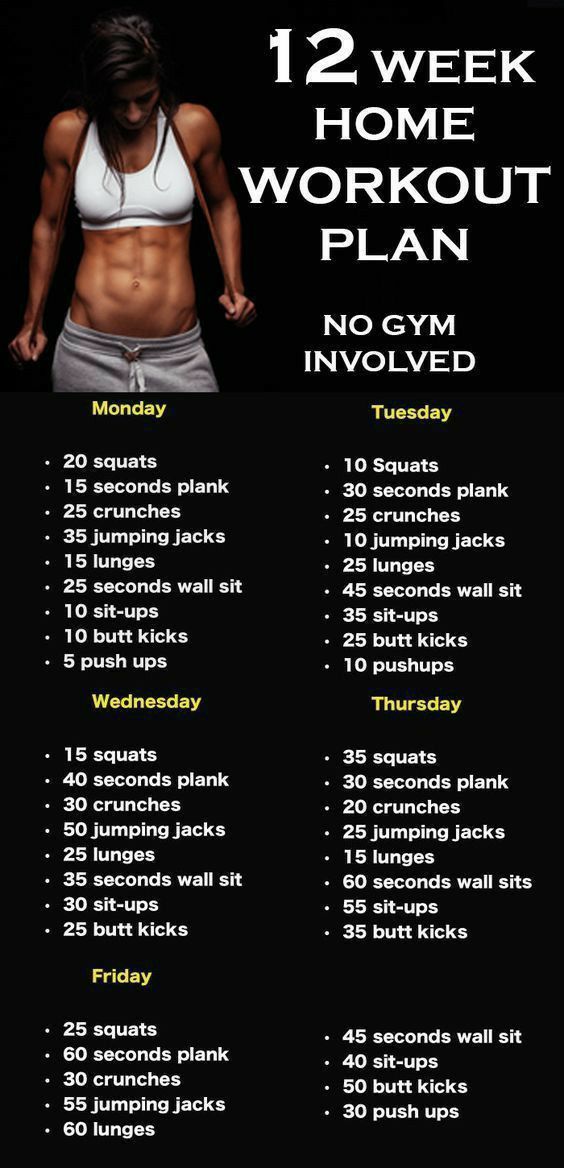Losing weight is a major achievement. But anyone who's done it knows that maintaining that weight loss over the long haul can be even more difficult. It’s not just about discipline or motivation—it’s about building a daily routine that holds up through life’s ups and downs. Most weight regain doesn’t happen overnight. It’s gradual and sneaky, often showing up when old habits make a quiet comeback and consistency starts to slip.
Studies show that only a small percentage of people who lose weight are able to maintain it for more than a couple of years. That’s because too many people treat weight loss like a phase. But the truth is, real change lasts only when your habits become part of your lifestyle—not a temporary fix.
Whether you've just reached your goal or you're trying to avoid falling into the regain trap again, these 20 practices offer a sustainable path forward. They’re not gimmicks. They’re not hard rules. They're flexible, real-life adjustments that add up over time—and they’re backed by both science and experience.
Let’s dive into the strategies that help real people stay lean, steady, and in control for years—not just weeks.
1. Avoid Short-Term Diet Trends

Quick-fix diets are everywhere, promising rapid results with extreme restrictions. But most of them end the same way—weight returns, often with interest. Fad diets typically ignore long-term behavior change and focus too much on what to cut out, not what to build in.
Studies from major medical conferences, like the ENDO event in 2016, found that within two years, many people who lost weight through restrictive plans regained over half of it. Why? Because their methods weren’t sustainable. They relied on a temporary shift, not a permanent foundation.
Instead of hopping on the next trending plan, focus on creating a way of eating that feels natural and maintainable. That means learning what satisfies your hunger, fuels your day, and doesn’t make you dread your next meal.
2. Make Strength Workouts Part of Your Week

Exercise is often treated like a short-term fix, but it’s one of the strongest anchors for lasting weight control. Not all workouts are equal, though. While walking or jogging is great for general health, strength training plays a bigger role in body composition and metabolic health.
Experts from the National Weight Control Registry—a long-term study of people who’ve successfully maintained major weight loss—say that incorporating strength or resistance training into your weekly plan can help preserve lean muscle. And the more muscle you maintain, the more calories your body burns, even at rest.
Try to include resistance exercises at least twice a week. This can be anything from lifting weights to doing bodyweight routines or resistance bands. Over time, this creates a stronger, leaner body that holds onto its progress more efficiently.
3. Use Walking as a Daily Strategy
You don’t need a gym membership or a high-end smartwatch to move more. One of the simplest and most accessible ways to maintain weight loss is just to walk—consistently. For many people, it’s their most underrated tool.
The trick isn’t just about walking for an hour once a week. It’s about building it into your day: parking farther from entrances, skipping the elevator, or taking a lunchtime stroll instead of scrolling through your phone.
Surveys show that over half the people who’ve successfully kept their weight off for multiple years walk at least an hour per day. It’s a subtle but powerful habit that adds up—without requiring dramatic effort.
4. Pause Before You Eat—Are You Really Hungry?

Emotional and mindless eating is one of the fastest ways to undo progress. You might not notice it when you're stressed, bored, or procrastinating—but those handfuls of snacks and random bites throughout the day start to pile up.
A useful rule: if you’re not hungry enough to eat a piece of fruit or a basic vegetable, you’re probably not truly hungry. It’s just a craving or a distraction. Building a pause into your eating routine gives you the space to make better choices—and avoid the food autopilot that leads to weight gain.
Real hunger is physical. It builds gradually. Emotional eating, on the other hand, tends to be sudden and connected to mood. Learning the difference can change your entire approach to food.
5. Use the Scale as a Tool, Not a Threat
While some people fear stepping on the scale, regular weigh-ins can help maintain awareness. Not to obsess over every fluctuation—but to stay connected to trends. People who weigh themselves regularly often catch patterns early, before a few pounds turn into a slippery slope.
Data from Cornell University suggests that individuals who check their weight daily are more likely to prevent regain. It keeps your habits in check and makes it easier to correct course quickly when something’s off.
The key is to detach from emotion when you weigh yourself. Treat it like checking the weather—just a neutral piece of information to help guide your next steps.
6. Get Your Workout Done Before the Day Takes Over
There’s something about mornings that makes movement stick. When you exercise first thing in the day, it sets the tone for healthier decisions all around. You’re also less likely to skip your workout due to unexpected tasks or exhaustion.
Morning workouts don’t have to be intense. A brisk walk, a light strength circuit, or a 20-minute yoga session can all count. It’s about consistency more than intensity.
If you're not naturally a morning person, try easing into the habit—going to bed 15 minutes earlier and waking up just a bit sooner to fit in something small. Over time, your body will adapt, and you’ll start to crave that early burst of energy.
7. Put Your Workouts on the Calendar Like Appointments

Planning your workouts like appointments increases the odds that they’ll happen. If your routine relies on “finding time,” chances are, that time gets taken by something else.
Treat your workouts like non-negotiable blocks of your week. Write them in your planner. Set phone reminders. Book classes ahead of time if that helps. Planning gives structure to your commitment—and makes it feel real.
This also frees up mental energy. If you already know what you’re doing and when, you won’t waste energy debating with yourself about whether to go or not. It’s already decided.
8. Prep Your Meals Before the Week Begins
One of the best ways to avoid slipping into unhealthy patterns is to remove the guesswork from meals. When you’re tired, stressed, or overwhelmed, it’s much harder to make a smart food decision on the fly. That’s where meal prepping comes in.
Spending an hour or two once or twice a week planning and prepping your meals doesn’t just save time—it helps you stay on track without thinking about it. Even if it’s just chopping veggies, portioning out snacks, or cooking a batch of lean protein, having healthy components ready to go drastically lowers your chances of making impulsive choices.
You don’t need to prep every meal of the week either. Sometimes just preparing for your busiest days is enough to keep everything on track.
9. Keep a Freezer Stash of Healthy Meals

Meal prep doesn’t always have to be fresh. Having go-to healthy meals frozen and ready can be a true lifesaver—especially when your schedule gets chaotic.
Choose a few simple recipes that freeze well, like veggie-packed soups, turkey chili, or stir-fry mixes. Portion them out and label them with dates. Then, when life throws you a curveball or you just don’t feel like cooking, you’ve got a reliable backup plan that won’t derail your progress.
This tip also helps cut down on food waste and grocery store stress, giving you more control over your weekly eating rhythm.
10. Surround Yourself with Supportive People
Who you spend your time with has a massive impact on your behavior. If your social circle normalizes fast food, sedentary weekends, and late-night snacking, it’s much harder to stay committed to your healthier habits.
You don’t need to abandon old friendships—but you may need to balance them. Look for communities, workout groups, or online spaces where health is the norm. That kind of support builds momentum. When you’re around people who value the same lifestyle, it reinforces your goals and makes the process feel less isolating.
Accountability doesn’t have to come from a coach. It can come from a walking buddy, a friend who meal preps with you, or even just someone who checks in on your progress now and then.
11. Eat at Regular Intervals to Avoid Energy Crashes
Skipping meals often backfires. While it might seem like a way to save calories, it usually leads to hunger-fueled binges later in the day. When you go too long without eating, blood sugar dips, cravings spike, and willpower gets thin.
Instead, aim to eat something every 3 to 4 hours—whether it’s a meal or a balanced snack. This keeps your energy steady and helps prevent that ravenous feeling that leads to overeating.
Choose snacks that combine protein, fiber, and healthy fats. Greek yogurt with berries, a boiled egg with avocado, or a handful of almonds and a banana can all keep you full without going overboard.
12. Skip the Unnecessary Add-ons
The extra calories that sneak in through sauces, toppings, and sides often go unnoticed—but they add up quickly. Think about cheese on your sandwich, creamy dressings, flavored coffee syrups, and sugary condiments.
You don’t have to strip every meal down to basics, but being selective with extras can save hundreds of calories each day. Ask for dressing on the side, skip the mayo, and swap fries for veggies when dining out.
It’s not about eating dry salads or sad sandwiches—it’s about keeping the flavor where it counts while trimming excess that doesn’t improve the experience.
13. Make Breakfast a Consistent Habit

There’s a reason breakfast is a cornerstone of many successful weight maintenance plans. It’s not just about the meal itself—it’s about the structure it creates for the rest of the day.
People who consistently eat a balanced breakfast are more likely to make healthier choices later. It reduces the urge to snack impulsively, improves focus, and helps maintain stable blood sugar levels throughout the morning.
Good options include high-fiber oats, eggs with whole-grain toast, or smoothies packed with fruit, greens, and protein. The key is balance—not just grabbing a carb-heavy pastry and coffee.
14. Keep Trigger Foods Out of Sight
Some foods have an almost magnetic pull—chips, cookies, ice cream, chocolate. If certain items repeatedly cause you to overeat, it may be better to avoid bringing them into the house at all.
It’s not about restriction—it’s about making the environment work for you. When tempting foods are visible and easy to access, you’re more likely to eat them mindlessly. But when they’re not around, you’re forced to make more intentional choices.
You know your triggers better than anyone. If a particular snack always leads to overeating, consider replacing it with something satisfying but less addictive.
15. Set Limits on Eating Out
Restaurant meals tend to be heavier in calories, fat, and sodium—even when they look “healthy.” You don’t need to avoid them completely, but eating out too often can chip away at your progress.
Many people who’ve successfully maintained weight loss limit restaurant meals to just a few per week—and they choose wisely. They check menus ahead of time, ask for modifications, and skip the extras.
When you cook at home, you control everything: the ingredients, the portion size, the seasonings. That kind of control adds up to better outcomes over time.
16. Prioritize Foods Rich in Flavonoids
Flavonoids are natural compounds found in many colorful fruits and vegetables—and they seem to have a surprising link to weight regulation. Research from the British Medical Journal suggests that people who consume more flavonoid-rich foods maintain their weight more effectively over the years.
Some of the best sources include berries, citrus fruits, apples, onions, celery, and peppers. These foods are also rich in antioxidants and fiber, offering multiple benefits beyond just weight management.
Adding a variety of these foods into your weekly meals supports your overall health while reinforcing your maintenance habits.
17. Stick With Your Routine—Even When Life Gets Busy
There will always be reasons to skip your workout or reach for convenience food: work deadlines, travel, family events, holidays, and plain old exhaustion. But what separates people who maintain their weight from those who regain it is consistency—even when it’s inconvenient.
That doesn’t mean perfection. It means doing something, even if it’s less than your usual. A 20-minute walk on vacation is better than nothing. A quick bodyweight workout in a hotel room is still progress. Ordering a grilled chicken sandwich instead of a double burger still matters.
People who keep the weight off long term tend to keep their habits intact through all seasons. They don’t press pause on progress just because it’s a birthday weekend or a rough work week. That steady approach becomes second nature over time.
18. Reduce Time in Front of Screens

The average person spends several hours a day in front of screens—TV, phones, tablets, computers. And while screen time itself isn’t harmful, it often leads to sedentary behavior, mindless eating, and disrupted sleep cycles.
According to long-term data from successful weight maintainers, people who watch less than 10 hours of television per week are more likely to avoid weight regain. That’s a big contrast from the general population, where the average is nearly three times higher.
Cutting screen time doesn’t mean eliminating entertainment—it means being more intentional. Use that extra time for a walk, cooking a fresh meal, or getting an extra hour of sleep—activities that move you toward your goals, not away from them.
19. Use the Plate Balance Method
Instead of obsessively counting every calorie, try shifting focus to how your plate is structured. The plate method is a visual guide that simplifies healthy eating without the need for apps or calculators.
Here’s how it works:
-
Fill half your plate with non-starchy vegetables—think spinach, broccoli, peppers, or cauliflower.
-
Use one-quarter of the plate for lean proteins like grilled chicken, fish, tofu, or legumes.
-
Reserve the final quarter for whole grains or complex carbs—such as brown rice, quinoa, or sweet potatoes.
This layout naturally increases fiber, lowers empty calorie intake, and helps with portion control—all without feeling restrictive. It’s sustainable because it gives you freedom within structure.
20. Don't Panic When the Scale Fluctuates

Weight maintenance isn’t a perfect, straight line. Fluctuations are normal and expected. Travel, stress, hormonal shifts, salty meals, and sleep quality can all cause temporary bumps in the scale. The important part is how you respond.
Instead of spiraling into panic or giving up entirely, use those small setbacks as check-ins. What’s changed? Are you skipping workouts? Eating more processed food? Sleeping poorly?
The difference between people who keep the weight off and those who regain it isn’t that one group never gains—it’s that they catch it early and adjust. They don’t treat every slip as failure. They keep going. And that mindset is what turns short-term success into lifelong stability.
Want to Go Even Further?
If you’ve already hit your weight loss goal and you’re navigating maintenance, it might be time to think about new goals that go beyond the scale. Many people find fulfillment in building strength, improving endurance, mastering a new sport, or focusing on mental health. These goals can help keep you engaged and motivated without obsessing over weight.
And remember, staying lean isn’t just about how you look—it’s about how you feel, how you move, and how empowered you are in your own body. Maintenance is the marathon phase, not the sprint. Build a rhythm that respects both your progress and your life, and you’ll never need to “start over” again.











